Abstract
There is still controversy about the optimum age for measles vaccination in developing countries, where the incidence of measles infection is higher in the first few months of life than it is in developed countries. This study was undertaken to collect reliable data in order to determine the optimum age for mass vaccination programmes. Haemagglutination inhibition (HI) antibodies were titrated periodically from birth to one year of age in children who were given the vaccine at different ages, between 5 and 9 months. It was found that 90% of children no longer have their maternal antibodies at 7-8 months of age, precisely at the period that the incidence of measles begins to rise sharply. Almost all children showed HI seroconversion when vaccinated at 71/2 months (or later, but not before), even if a low level of maternal antibody still persisted when the vaccine was given. These data show that there is an advantage in carrying out measles vaccination at 71/2 months of age in countries with conditions similar to that of Kenya. The duration of post-vaccinal immunity beyond one year of age has not been studied, but it can reasonably be expected that immunity after one vaccination can last for at least 3-5 years, thus exceeding the period when African children are most exposed to malnutrition.
Full text
PDF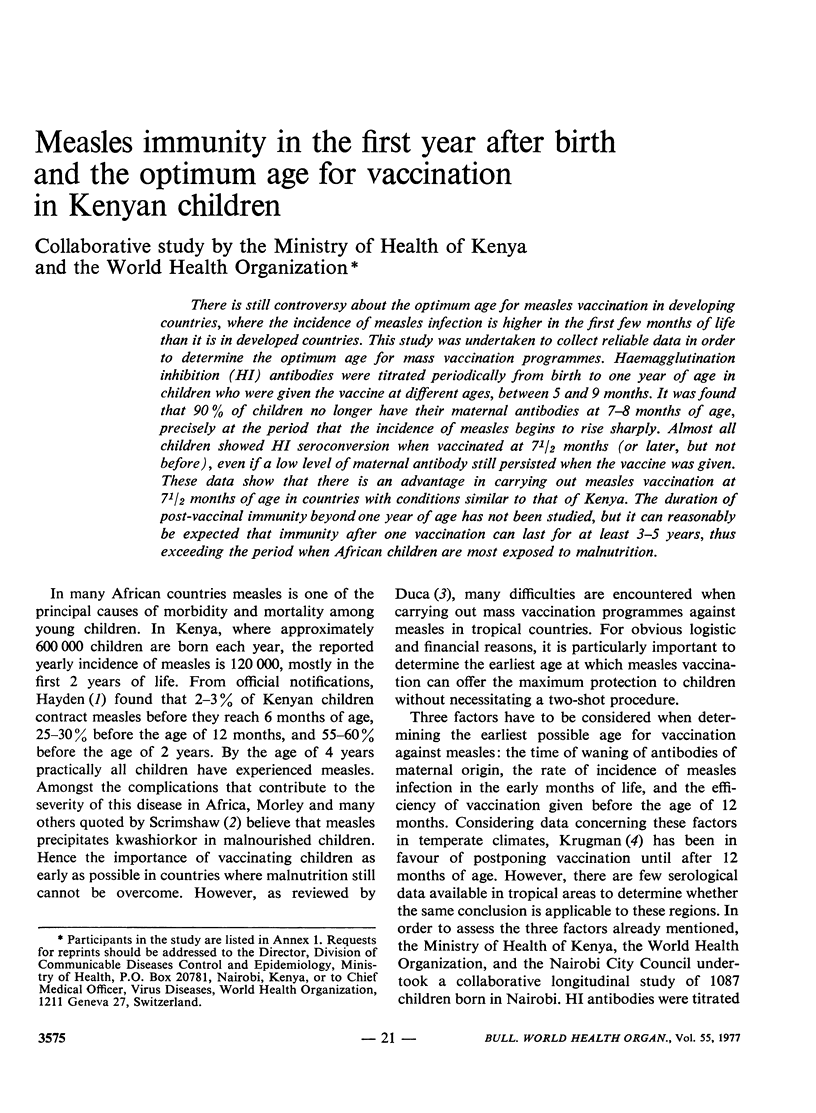
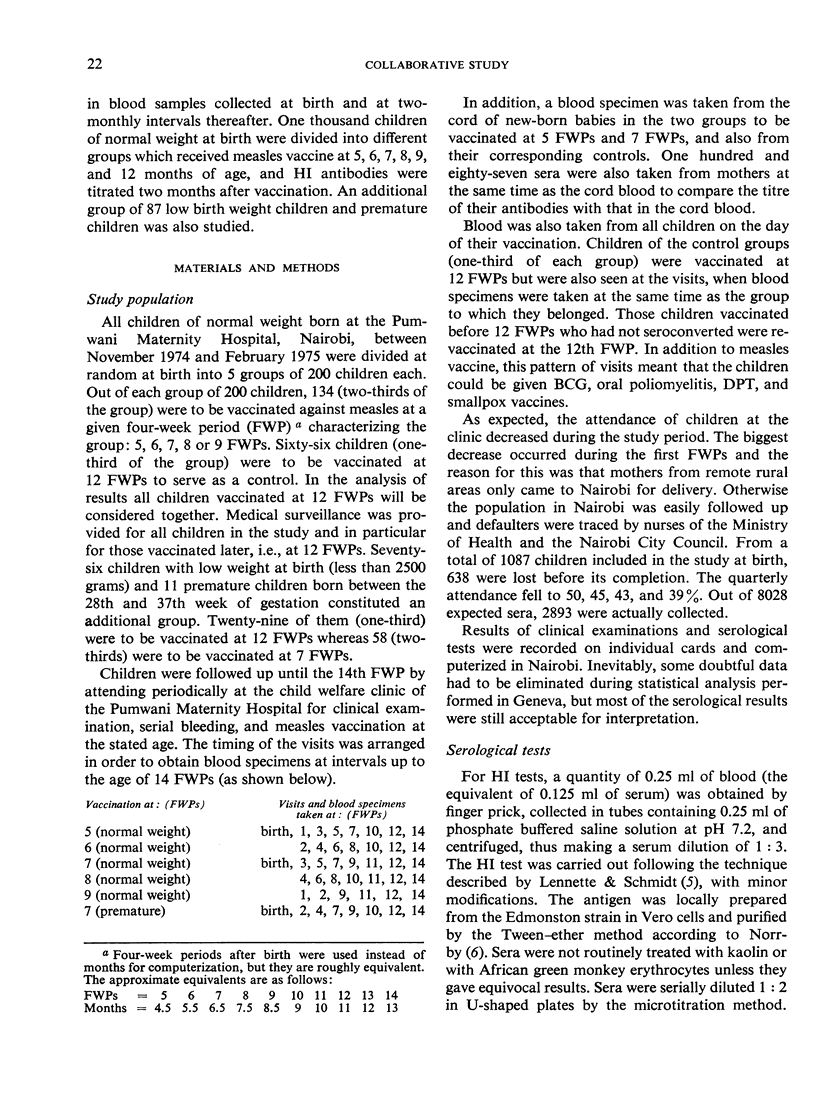
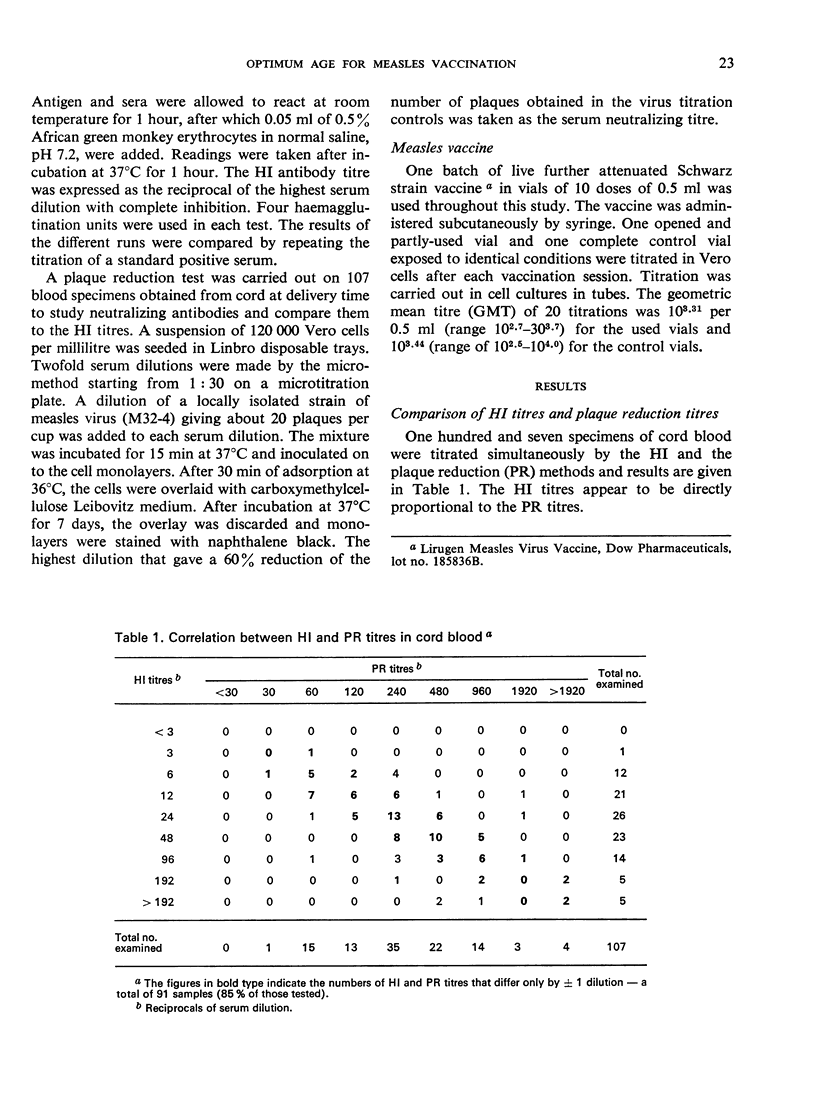
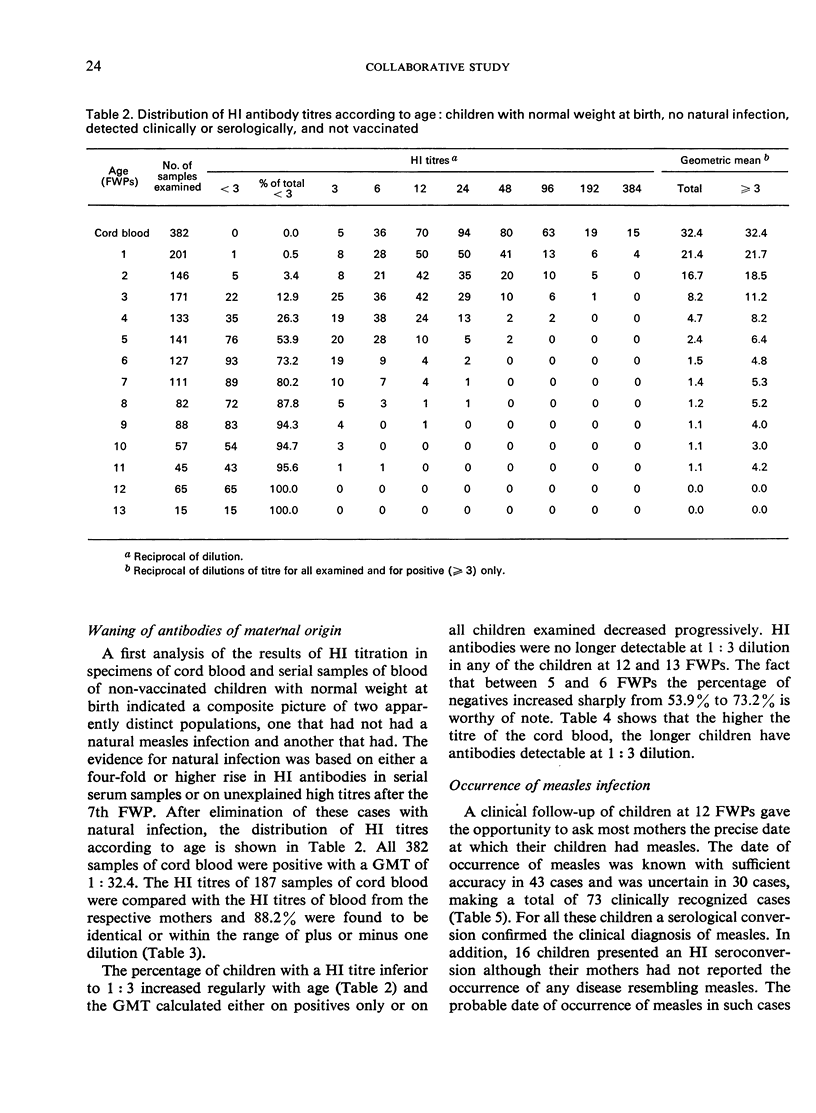
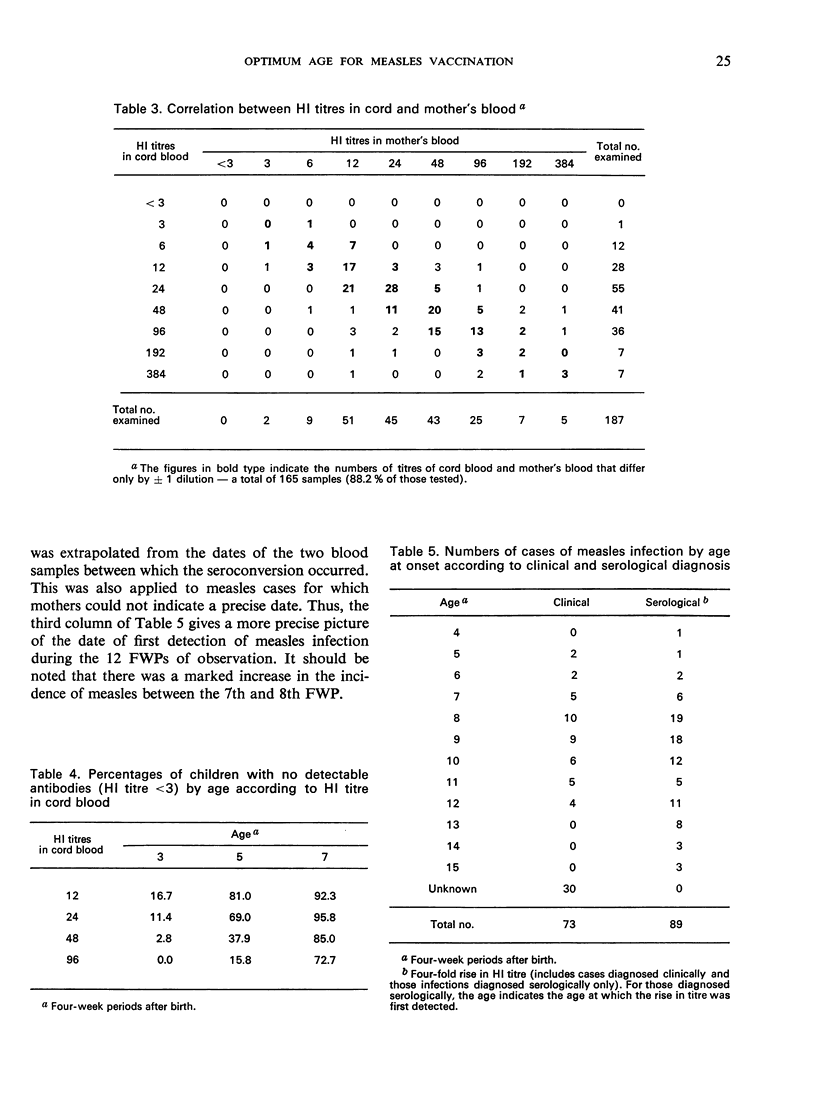
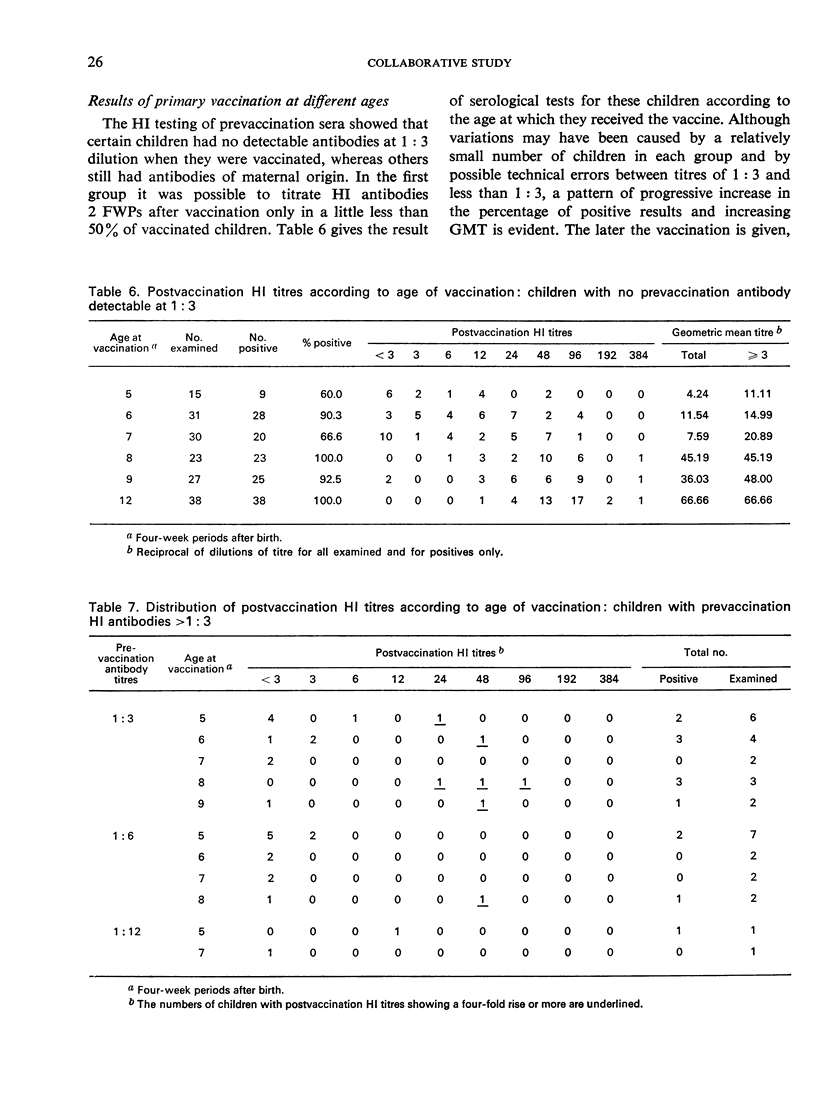
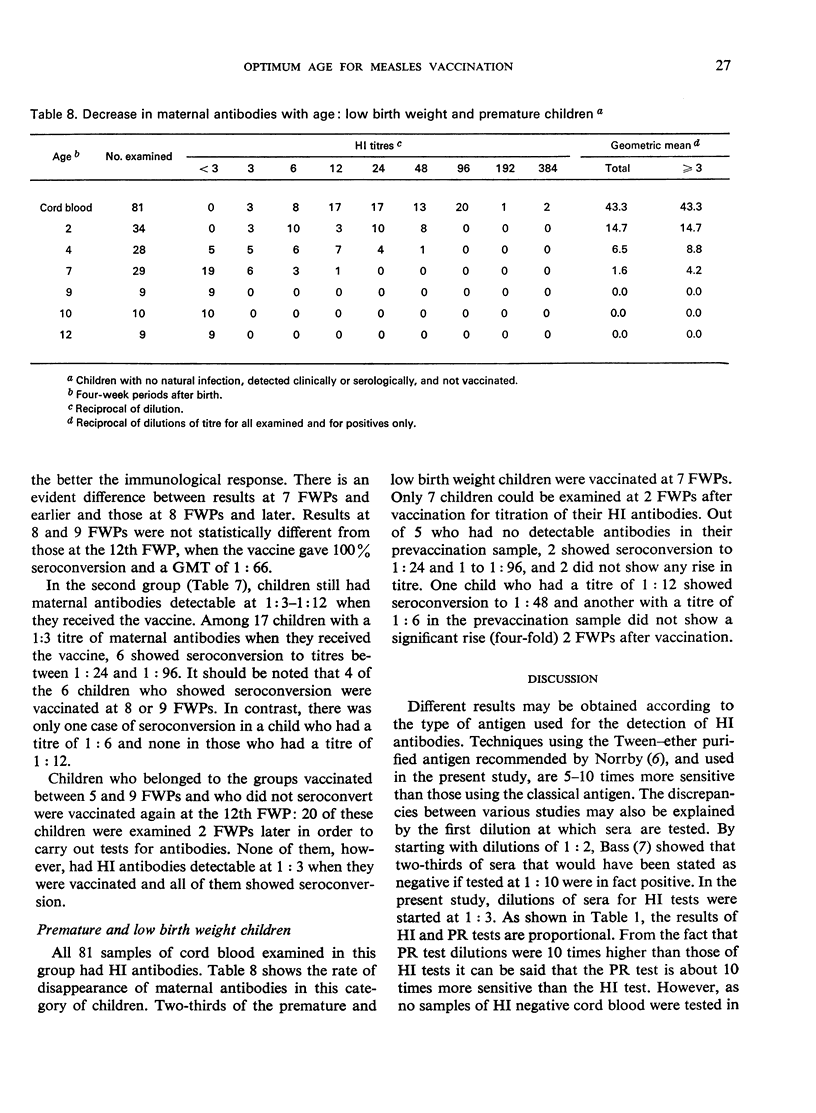
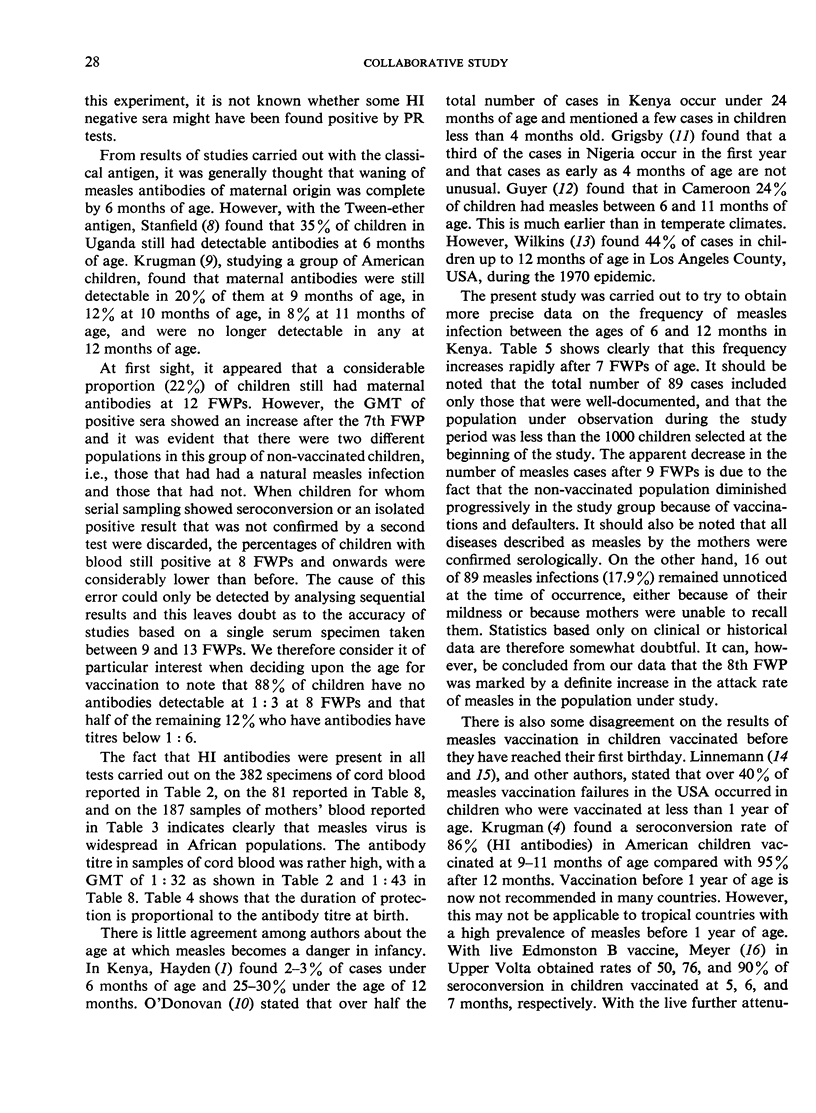
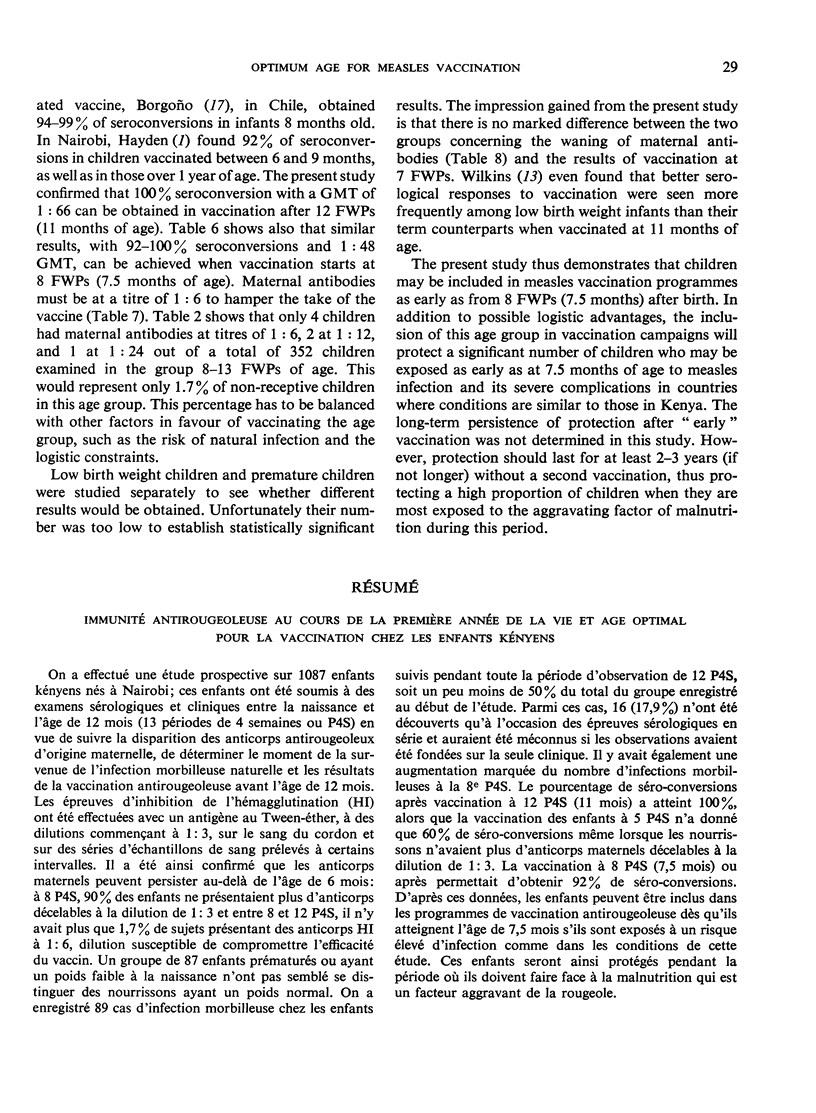
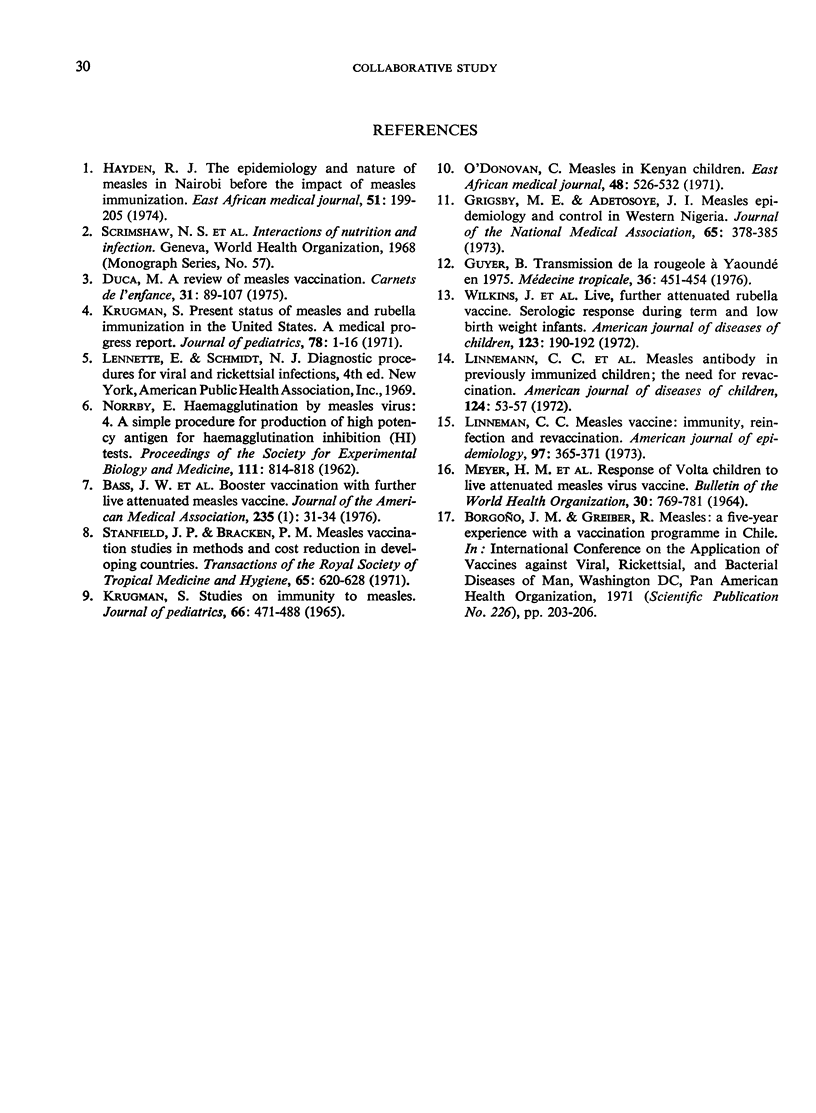
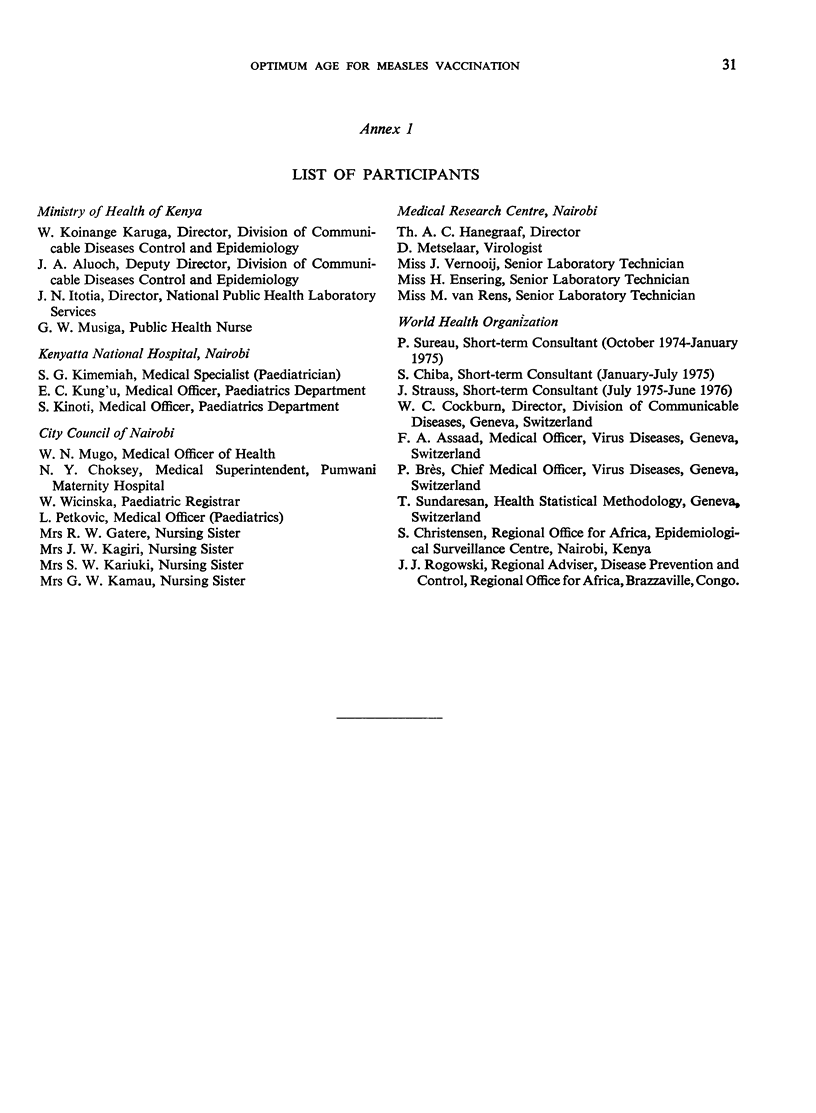
Selected References
These references are in PubMed. This may not be the complete list of references from this article.
- Bass J. W., Halstead S. B., Fischer G. W., Podgore J. K., Pearl W. R., Schydlower M., Wiebe R. A., Ching F. M. Booster vaccination with further live attenuated measles vaccine. JAMA. 1976 Jan 5;235(1):31–34. [PubMed] [Google Scholar]
- Grigsby M. E., Adetosoye J. I. Measles epidemiology and control in Western Nigeria. J Natl Med Assoc. 1973 Sep;65(5):378–385. [PMC free article] [PubMed] [Google Scholar]
- Hayden R. J. The epidemiology and nature of measles in Nairobi before the impact of measles immunization. East Afr Med J. 1974 Feb;51(2):199–205. [PubMed] [Google Scholar]
- KRUGMAN S., GILES J. P., FRIEDMAN H., STONE S. STUDIES ON IMMUNITY TO MEASLES. J Pediatr. 1965 Mar;66:471–488. doi: 10.1016/s0022-3476(65)80112-3. [DOI] [PubMed] [Google Scholar]
- Krugman S. Present status of measles and rubella immunization in the United States: a medical progress report. J Pediatr. 1971 Jan;78(1):1–16. doi: 10.1016/s0022-3476(71)80259-7. [DOI] [PubMed] [Google Scholar]
- Linnemann C. C., Jr, Dine M. S., Bloom J. E., Schiff G. M. Measles antibody in previously immunized children. The need for revaccination. Am J Dis Child. 1972 Jul;124(1):53–57. doi: 10.1001/archpedi.1972.02110130055008. [DOI] [PubMed] [Google Scholar]
- MEYER H. M., Jr, HOSTETLER D. D., Jr, BERNHEIM B. C., ROGERS N. G., LAMBIN P., CHASSARY A., SMADEL J. E. RESPONSE OF VOLTA CHILDREN TO LIVE ATTENUATED MEASLES VIRUS VACCINE. Bull World Health Organ. 1964;30:769–781. [PMC free article] [PubMed] [Google Scholar]
- NORRBY E. Hemagglutination by measles virus. 4. A simple procedure for production of high potency antigen for hemagglutination-inhibition (HI) tests. Proc Soc Exp Biol Med. 1962 Dec;111:814–818. doi: 10.3181/00379727-111-27930. [DOI] [PubMed] [Google Scholar]
- O'Donovan C. Measles in Kenyan children. East Afr Med J. 1971 Oct;48(10):526–532. [PubMed] [Google Scholar]
- Stanfield J. P., Bracken P. M. Measles vaccination: studies in methods and cost reduction in developing countries. Trans R Soc Trop Med Hyg. 1971;65(5):620–628. doi: 10.1016/0035-9203(71)90046-0. [DOI] [PubMed] [Google Scholar]


